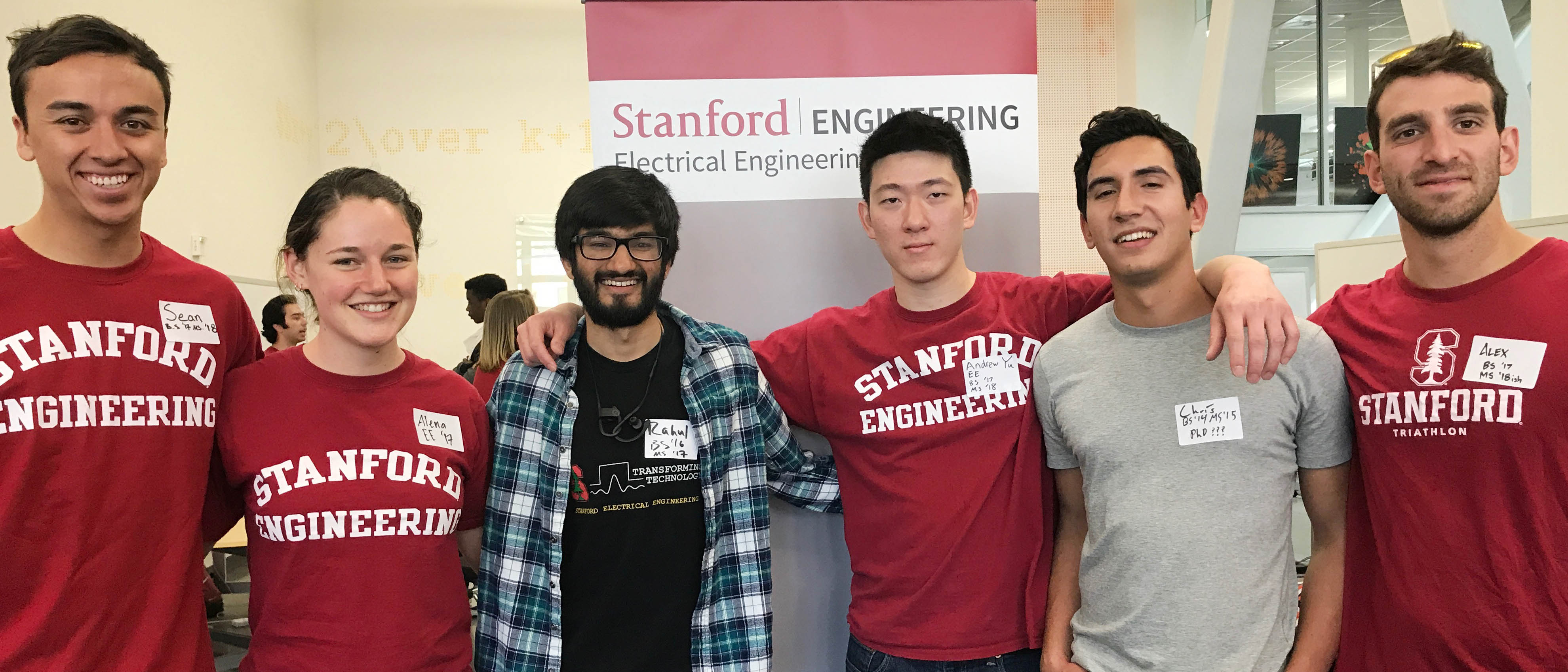Main navigation

Where to Start, part 1
A Bachelor's degree in EE is a great place to start. Our undergraduate program provides a rigorous and balanced foundation in physics, mathematics and computing; core courses in electronics, information systems and digital systems; and the development of skills in the analysis and design of systems. Our undergraduate curriculum is organized into three disciplinary areas: (I) Hardware and Software Systems, (II) Information Systems and Science, and (III) Physical Technology and Science, and several interdisciplinary areas.
Choosing a Major can be challenging; but don't worry. EE has an open-door policy, and undergraduate peer advisors want to speak with you about EE curriculum and their student experience. You can also watch this video about EE's curriculum. If you are inspired from the STEM or CS direction, pursuing an EE major is almost seamless. By nature, EE and CS are interrelated– check the list of EE and CS courses that intersect the two disciplines. EE can also be chosen as a second major, or as a minor. Double majors or major and minors could be: EE and CS, or EE and Physics. EE also has a coterminal degree program allows undergraduates to study for a Master of Science (M.S.) degree while completing their bachelor's degree(s) in the same or a different department.
Where to Start, part 2
- Read our B.S. EE Program Overview page.
- Schedule a meeting to speak with an Undergraduate Student Advisor - popular topics are classes, research opportunities, and graduation. Email them at undergradta@ee.stanford.edu(link sends e-mail)
- Comprehensive degree information is available in the Undergraduate Engineering Handbook – UGHB, as well as the Stanford Bulletin ExploreDegrees.
- Sample 4-year plans (XLS) and flowcharts (doc) are a good way to help you plan within your interests. Some undergraduate students pursue a co-term, combining a Bachelors and Masters degree. Others choose to double-major, and/or take classes outside of EE.
- Attend Majors Night (which happens in autumn quarter). Majors Night is an opportunity to chat with your peers and faculty in EE.
The EE Undergraduate Experience
Our curriculum provides a hands-on approach to design, build and demonstrate hardware, software, embedded systems and wirelessly connected networks. As an EE student, you will build a variety of projects, demonstrating real understanding and application of physics, math, and systems. In addition to the course labs, EE also provides a 24/7 student maker lab. Lab64 is located in the Packard building, and offers popular student workshops and peer assistance throughout the quarter.
- Makerspace lab64 - a community-oriented makerspace for undergrads. Lab64 info page.
- Read about 8 of our most popular Undergrad Courses. Watch course videos, too.
- Read What Past EE Students Say about the program
Opportunities and Research
EE undergraduates have access to research and study abroad experiences that can enhance their top-notch education.
- To find out more about EE-specific undergraduate research opportunities, visit our REU pages.
- Discover all of the other research opportunities that exist for undergrads by visiting Stanford's Research & Independent Projects site.
- Nearly one-half of each graduating class studies abroad. Find out more on Stanford's Bing Overseas Study Program site.
Student Life: Social & Professional Groups
Stanford has hundreds of student groups and organizations that enrich the experience of our students. Several student groups are of specific interest to EE undergraduate students, including:
- Fuse, EE undergraduate student group
- WEE, Women in Electrical Engineering, undergrad and grad students
- OSA, Optical Society of Stanford, undergrad and grad students
- IEEE, Stanford Chapter, undergrad and grad students
- WISE Ventures, resources, networks, and collaborative research-based projects and programs, undergrad and grad students
Visiting Campus
We know we're biased, but Stanford may be the most beautiful campus in the world. Come for a visit soon! Electrical Engineering is housed within four buildings near Stanford's Engineering Quad. If you're coming to campus, be sure to contact Prof. Dustin Schroeder, Associate Chair of Undergraduate Education. He may be able to provide a lab or building tour.
- Visit our Contact & Directions page for information about EE's buildings and their location on campus.
- For general Stanford visitor information, visit the Stanford Visitor Information site.
Applying to Stanford
The University's Office of Undergraduate Admissions handles undergraduate admissions. Three principles guide their holistic evaluation and selection process: Academic Excellence, Intellectual Vitality, and Personal Context. For more information about the admissions process, visit the Undergraduate Admissions site.
Next Steps for Prospective EE Undergrads
